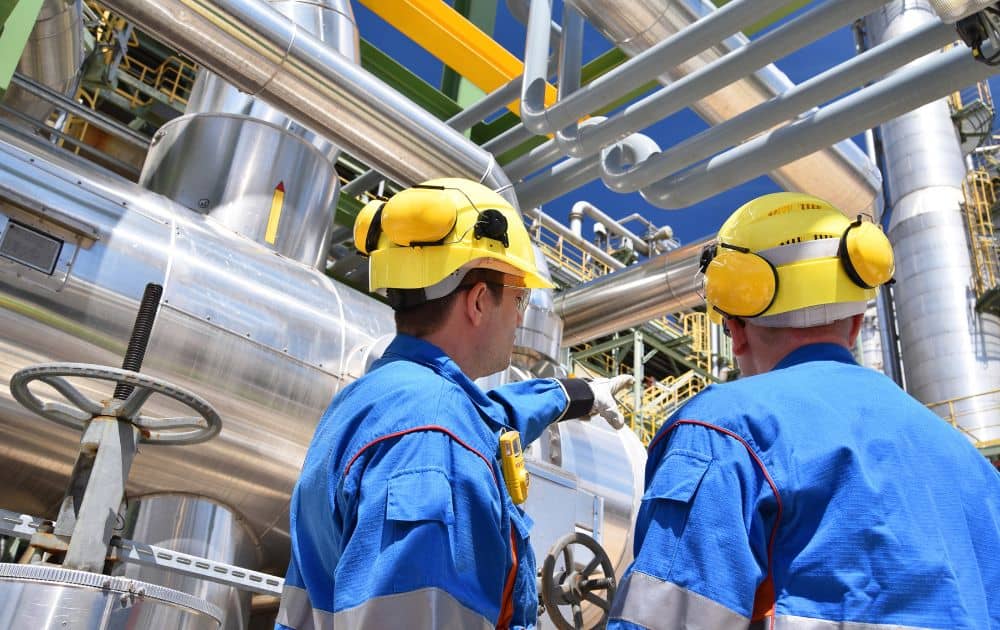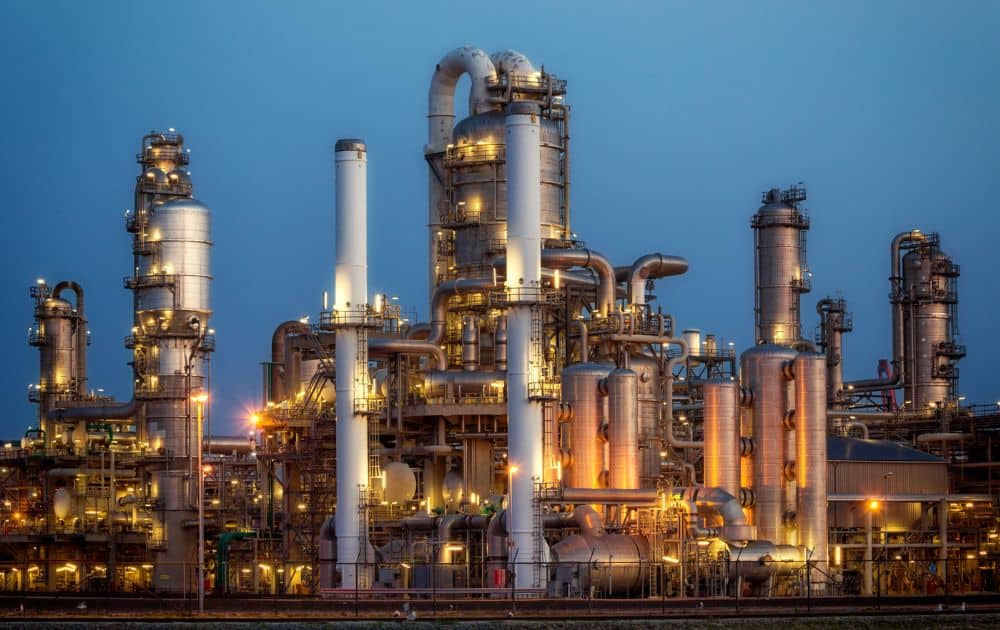The oil and gas industry is undergoing a significant transformation, driven by the adoption of digital technologies. These technologies are revolutionizing the way the industry operates, bringing about increased efficiency, improved safety, and enhanced sustainability.

In this article, we will explore the importance of digital technologies and the impact of digital transformation in the oil and gas sector.
Importance of Digital Technologies
Digital technologies play a crucial role in the oil and gas industry, enabling companies to streamline operations, optimize resources, and make data-driven decisions. Here are some key reasons why digital technologies are important in the industry:
- Operational Efficiency: Digital technologies allow for the automation and optimization of various processes, reducing manual labor and improving efficiency. From drilling operations to supply chain management, digital tools enable companies to operate more effectively and reduce costs.
- Data-Driven Decision Making: The oil and gas industry generates massive amounts of data. Digital technologies, such as big data analytics, provide the means to collect, analyze, and interpret this data to gain valuable insights. These insights help companies make informed decisions, improve operational performance, and identify areas for optimization.
- Improved Safety: Safety is a top priority in the oil and gas industry. Digital technologies, such as real-time risk management systems and remote monitoring, enhance safety by providing early warnings, enabling proactive maintenance, and facilitating remote control of critical operations. This helps minimize the risk of accidents and ensures the well-being of workers.
- Enhanced Environmental Sustainability: The oil and gas industry faces increasing pressure to reduce its environmental footprint. Digital technologies offer solutions to monitor and reduce emissions, optimize energy consumption, and integrate renewable energy sources. These sustainable practices contribute to a greener and more responsible industry.
Impact of Digital Transformation
Digital transformation has a profound impact on the oil and gas industry, revolutionizing traditional practices and driving innovation. Here are some key areas where digital transformation is making a difference:
- Efficient Operations: Digital technologies enable predictive maintenance, allowing companies to anticipate equipment failures and schedule maintenance activities proactively. Remote monitoring and control systems provide real-time insights into operations, enabling companies to optimize production and reduce downtime.
- Cost Reduction: By streamlining operations, automating processes, and optimizing resource allocation, digital transformation helps reduce costs in the oil and gas industry. Improved efficiency and data-driven decision making lead to better resource utilization, lower operational expenses, and increased profitability.
- Improved Safety and Compliance: Digital technologies enhance safety by providing real-time monitoring of operations, early detection of safety risks, and effective emergency response systems. These technologies also facilitate compliance with regulatory requirements, ensuring that companies meet safety and environmental standards.
- Sustainability and Environmental Responsibility: Digital transformation enables the oil and gas industry to embrace sustainable practices and reduce its environmental impact. Through the integration of renewable energy sources, emission monitoring, and energy efficiency solutions, companies can contribute to a more sustainable future.
Digital transformation is revolutionizing the oil and gas industry, leading to significant improvements in operational efficiency, safety, and sustainability. Embracing digital technologies helps companies stay competitive, adapt to market changes, and uncover new growth opportunities.
Key Technologies Driving Transformation
Digital transformation in the oil & gas industry is being driven by several key technologies that are revolutionizing the sector. These technologies enable businesses to optimize operations, improve safety, and embrace sustainable practices. The key technologies driving transformation in the oil & gas industry include the Internet of Things (IoT), Artificial Intelligence (AI) applications, and Big Data Analytics.
Internet of Things (IoT) in Oil & Gas
The Internet of Things (IoT) holds enormous potential for transforming the oil & gas industry. Connecting devices, sensors, and equipment enables real-time data collection, analysis, and communication, enhancing monitoring, control, and decision-making across operations.
In the oil & gas sector, IoT is used to monitor and manage critical infrastructure such as pipelines, wells, and refineries. IoT sensors can detect anomalies, measure environmental conditions, and provide real-time insights into equipment performance. This data helps in predictive maintenance, reducing downtime, optimizing energy consumption, and enhancing overall operational efficiency.
Artificial Intelligence (AI) Applications
Artificial Intelligence (AI) is revolutionizing the oil & gas industry by enabling advanced automation, optimization, and decision-making processes. AI algorithms can analyze vast amounts of data, identify patterns, and make intelligent predictions. This helps in improving operational efficiency, reducing costs, and enhancing safety.
In the oil & gas sector, AI is used for various applications such as predictive maintenance, reservoir modeling, drilling optimization, and supply chain management. AI-powered systems can detect potential equipment failures, optimize drilling parameters, and enhance supply chain logistics through predictive analytics.
Big Data Analytics
The oil & gas industry generates massive volumes of data from multiple sources such as sensors, exploration activities, and production processes. Big Data Analytics plays a crucial role in extracting valuable insights from this data to drive informed decision-making and optimize operations.
Big Data Analytics analyzes large datasets to identify trends, patterns, and anomalies that are challenging to detect otherwise. It supports predictive maintenance, production optimization, safety monitoring, and risk analysis, enabling companies to make informed decisions, enhance operational efficiency, and lower costs.
The integration of these key technologies, namely IoT, AI, and Big Data Analytics, is transforming the oil & gas industry by enhancing operational efficiency, safety, and sustainability. Embracing these technologies enables businesses to stay at the forefront of digital transformation and unlock new opportunities for growth and innovation.

Enhancing Operations with Digital Solutions
Let’s explore three key digital solutions that are transforming operations in the industry: predictive maintenance, remote monitoring and control, and asset optimization.
Predictive Maintenance
Predictive maintenance utilizes data from sensors, equipment history, and real-time analytics to predict potential equipment failures before they happen. By employing advanced algorithms and machine learning, predictive maintenance identifies patterns and anomalies, enabling proactive scheduling of maintenance activities. This strategy mitigates costly unplanned downtime, optimizes maintenance schedules, and prolongs equipment lifespan.
A key component of predictive maintenance is the Internet of Things (IoT), which involves connecting sensors and devices to collect and transmit data. These sensors monitor various parameters such as temperature, pressure, and vibration, providing valuable insights into the health and performance of equipment. By implementing predictive maintenance strategies, oil & gas companies can reduce maintenance costs, improve asset reliability, and minimize the risk of equipment failures.
Remote Monitoring and Control
Remote monitoring and control systems enable real-time visibility and management of operations across multiple sites and locations. Through the use of sensors, automation, and data analytics, operators can remotely monitor equipment performance, track production levels, and identify potential issues without physically being present at the site. This technology allows for centralized control and decision-making, leading to improved operational efficiency and reduced costs.
Remote monitoring and control systems further enable operators to swiftly respond to alarms and anomalies, reducing downtime and optimizing production processes. Accessing and controlling equipment remotely allows operators to make timely adjustments, optimize energy consumption, and enhance overall operational performance.
Asset Optimization
Asset optimization in the oil & gas industry utilizes digital solutions to maximize asset utilization and efficiency. Integrating real-time data, advanced analytics, and machine learning algorithms enables operators to make informed decisions for optimizing asset performance. This includes adjusting production rates, minimizing energy consumption, and ensuring optimal operational conditions.
Through the use of asset optimization solutions, operators can achieve higher production yields, minimize operational costs, and extend the lifespan of assets. Additionally, these solutions enable proactive maintenance strategies, inventory management optimization, and better resource allocation, leading to improved overall operational efficiency.
Embracing digital solutions like predictive maintenance, remote monitoring and control, and asset optimization enables the oil & gas industry to enhance operational efficiency, cut costs, and optimize performance. These technologies provide operators with real-time insights, empowering them to make data-driven decisions and adapt to market changes.
Transform Your Operations with LK Tech's Digital Solutions
You can rely on our innovative IT solutions in Cincinnati to enhance operational efficiency and drive significant cost savings. Contact us today to discover how we can elevate your operations with these cutting-edge technologies and tailor our solutions to meet your specific needs and challenges in the oil & gas industry.


